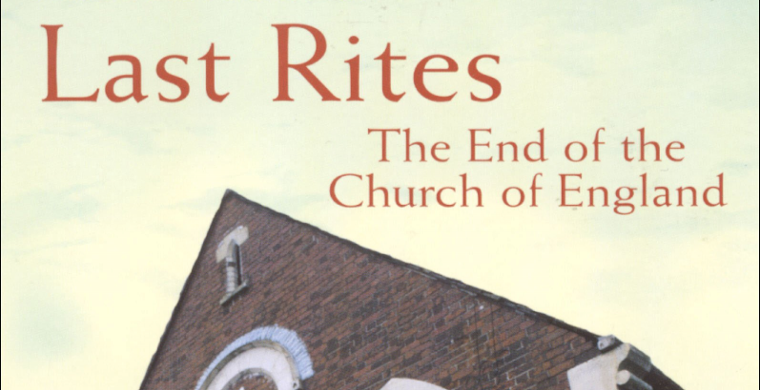CHURCH OF ENGLAND FACES "MASSIVE SHRINKAGE" OWING TO COVID-19 PANDEMIC
By David W. Virtue, DD
www.virtueonline.org
May 29, 2020
The Church of England is beginning the process of rethinking its role owing to a "massive shrinkage" in the number of dioceses and parish churches that it runs -- and could even mean that it had dozens fewer bishops, says a report in The Times.
The incoming Archbishop of York, Stephen Cottrell, 61, has been appointed to chair a review of the future of its 42 dioceses, (42 cathedrals and 16,000 churches), which comes two months after every church closed its doors and services went online.
He will outline a vision and lead a strategy committee which will look at the size and number of dioceses in future. Sources say he has privately signaled that he is prepared to contemplate dramatic cuts and the mothballing of historic buildings.
A 2018 survey of The Church of England revealed that 2.9% or 756,000 weekly attend a parish, down from 895,000 a year earlier. The population of England is 56 million. The Church has 108 bishops.
The rise of online services has prompted a rethink of how the Church of England pays for its 42 cathedrals and 16,000 churches -- of which 12,500 are listed by Historic England -- with dioceses under pressure to merge their functions in education, theological training and administration to save money, said The Times.
"The crisis is going to lead to a massive shrinkage in the number of cathedrals, dioceses and parish churches," said a source familiar with his thinking.
"This has vastly accelerated a dramatic change in the way the Church of England will do its stuff because of declining attendance and declining revenues."
Separately, senior Anglican figures said that rather than cut clergy in response to the church's financial woes, there must be a cull of bishops, whose numbers have "grown like Topsy" to 108, more than double the figure in the late Victorian era.
One figure at the heart of the discussions held by the House of Bishops last week said the experience of the pandemic had brought long-running issues to a head: "We are at a crossroads. Everything's a blank sheet of paper. It is allowing us to get back to that question of first principle, what it means to be the church.
"People haven't stopped gathering for worship. They've been doing it over Zoom or over YouTube. I'm certainly not saying we don't need our church buildings, but we need to look at how many we need and how we use them."
Cottrell has already made it clear that the church must not be dragged down by struggles to prop up an unaffordable system of buildings and paid clergy.
Earlier this year, central funding for his Chelmsford diocese was cut from £3m to a basic £1m and he warned that those parishes that could no longer afford a stipendiary priest would need to switch to a licensed lay minister or self-supporting priest-in-charge.
He said at the time: "What we are really trying to do is define what we mean by 'church'. I think for too long, 'church' has meant a building and a vicar and possibly a geographic area to serve."
Church officials emphasized that Cottrell had not yet tabled any formal documents or held any formal meetings and the future size and number of dioceses were only at the discussion stage.
A church spokesman said: "Our most recent House of Bishops meeting included updates from groups of bishops looking at the coronavirus and its implications for the future of the Church of England. This also involved a series of breakout groups further looking at issues including political and economic change, shifts in technology as well as the impact of demographic change."
He added that different bishops "have very different views on what could or should happen".
In a tweet, the Rt. Rev. Philip North, Bishop of Burnley contested The Times article's summary of the House of Bishops discussion and said, "Clergy deployment decisions are made by dioceses and not on Zoom meetings of the HoB. Hard to say what will come out of this crisis, but ... we aim to sustain current clergy numbers and plant new congregations."
"Any plan to reduce numbers of dioceses, would lead to years of pointless debates and introspection at a time when we need to be looking outwards, naming injustice and addressing a nation with a message of hope."
The Church of England is reaping what it has sown in allying itself so closely with state decisions; increasingly afraid to preach a transcendent gospel, focusing more on social issues, while the Archbishop of Canterbury endlessly apologizes for ancient sins. The Church of England's slow capitulation to pansexuality is only accelerating the process of decline.
The Church of England along with the American Episcopal Church and the Anglican Church of Canada are all in massive decline. This is happening even as the Anglican church in North America grows, it being larger numerically than the Anglican Church of Canada, with GAFCON controlling 80% of the Anglican Communion.
You can read The Times story here: https://www.thetimes.co.uk/article/church-of-england-weighs-up-cull-of-bishops-lj0mpk0ll
END














